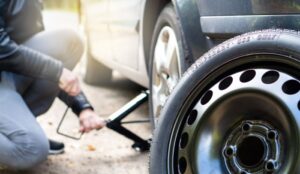
If you own a car in Texas, you know that having car insurance is a legal requirement. However, car insurance doesn’t just protect you from legal penalties; it also provides essential coverage in case of an accident. With so many car insurance options available, knowing the best coverage for your needs can take time and effort. In this article, we’ll cover everything you need to know about car insurance for Texans, from the different types of coverage available to how to find the right policy for you.
1. Understanding Car Insurance Requirements in Texas
Before we dive into the different types of car insurance coverage available, it’s essential to understand what the state of Texas requires regarding car insurance. In Texas, drivers must carry liability insurance to cover the costs of damages or injuries they cause to others in a car accident. The minimum liability insurance requirements in Texas are:
- $30,000 bodily injury liability coverage per person
- $60,000 bodily injury liability coverage per accident
- $25,000 property damage liability coverage per accident
It’s important to note that these are only the minimum requirements, and many drivers opt for higher coverage limits to protect themselves better in case of an accident.
2. Types of Car Insurance Coverage
While liability insurance is the only type of car insurance required in Texas, several other types of coverage can provide additional protection in case of an accident. Here are some of the most common types of car insurance coverage:
Collision Coverage
Collision coverage helps pay for damages to your car if you’re in an accident, regardless of who’s at fault. This coverage typically has a deductible, the amount you’ll need to pay out of pocket before your insurance kicks in.
Comprehensive Coverage
Comprehensive coverage helps pay for damages to your car unrelated to a collision, such as theft, vandalism, or weather-related damage. Like collision coverage, comprehensive coverage also has a deductible.
Personal Injury Protection
Personal injury protection (PIP) coverage helps pay for medical expenses and lost wages for you and your passengers after an accident, regardless of who’s at fault.
Uninsured/Underinsured Motorist Coverage
Uninsured/underinsured motorist coverage helps protect you if you’re in an accident with a driver who doesn’t have enough insurance to cover your damages or doesn’t have insurance at all.
3. Factors That Affect Your Car Insurance Premiums
Several factors can affect how much you’ll pay for car insurance in Texas, including:
- Your age, gender, and marital status
- Your driving record
- The type of car you drive
- Your credit score
- Your location
- How much coverage you choose
4. How to Choose the Right Car Insurance Policy
Choosing the right car insurance policy can be daunting, but it’s essential to ensure adequate coverage in case of an accident. Here are some tips to help you choose the right policy:
Determine Your Coverage Needs
The first step in choosing the right car insurance policy is determining your coverage needs. Consider factors such as your car’s age and value, driving habits, and budget. For example, if you have a brand-new vehicle, you may opt for comprehensive coverage to protect against theft or damage. On the other hand, if you have an older car, liability coverage may be sufficient.
Shop Around for Quotes
Once you’ve determined your coverage needs, it’s time to start shopping around for quotes. Don’t just settle for the first quote you receive – compare rates from several providers to find the best deal. Make sure to compare not only the premiums but also the coverage options, deductibles, and limits.
Check the Provider’s Reputation
Before choosing a car insurance provider, check their reputation. Look for reviews and ratings from third-party sources, such as J.D. Power or Consumer Reports. You can also check with your state’s insurance department to see if the provider has any complaints or disciplinary actions on file.
Consider the Provider’s Financial Strength
It’s important to choose a car insurance provider with the financial strength to pay out claims if needed. Look for providers with high financial strength ratings from companies.
Review the Policy Terms and Conditions
Before signing up for a car insurance policy, carefully review the terms and conditions. Look for any exclusions or limitations, such as restrictions on coverage for certain types of accidents or damages. Also, ensure you understand the deductibles, limits, and other policy details.
Take Advantage of Discounts
Many car insurance providers offer discounts for safe driving, multiple cars, and good grades. Make sure to ask about any available discounts to lower your premiums.
Consider Bundling Policies
If you have other insurance policies, such as homeowners or renters insurance, consider bundling them with your car insurance policy. Bundling can often result in a lower overall premium.
5. Common Car Insurance Discounts
Many car insurance providers offer discounts to help you save money on your premiums. Here are some of the most common discounts:
- Safe driver discount: If you have a good driving record, you may qualify for a safe driver discount.
- Multi-car discount: If multiple cars are insured under the same policy, you may be eligible for a multi-car discount.
- Bundling discount: If you have other insurance policies with the same provider, such as home insurance, you may qualify for a bundling discount.
- Good student discount: If you’re a student with good grades, you may be eligible for a good student discount.
- Anti-theft device discount: If your car has an anti-theft device installed, you may qualify for a discount on your premiums.
6. What to Do After an Accident
If you’re in a car accident, knowing what steps to take to ensure your safety and protect your legal rights is essential. Here are some steps to follow:
- Check for injuries: Ensure you and your passengers are safe and call for medical help if needed.
- Call the police: Even if the accident is minor, it’s essential to call the police to report the accident.
- Exchange information: Exchange contact and insurance information with the other driver(s) involved in the accident.
- Document the scene: Take photos of the accident and any damage to your car.
- Notify your insurance provider: Contact your insurance provider to report the accident and start the claims process.
7. Car Insurance Fraud in Texas
Car insurance fraud is a significant problem in Texas and can lead to higher premiums for everyone. Here are some common types of car insurance fraud:
- Staged accidents: Some people stage accidents to collect insurance payouts.
- Fake injuries: Some people fake injuries to collect insurance payouts.
- Insurance application fraud: Some people lie on their insurance applications for lower premiums.
To protect yourself from car insurance fraud, only work with reputable insurance providers and report any suspicious activity to the authorities.
8. The Importance of Shopping Around for Car Insurance
Regarding car insurance, it’s essential to shop around and compare quotes from several providers. By doing so, you can ensure that you’re getting the best coverage at the best price. When choosing a policy, compare coverage levels, deductibles, and discounts.
9. The Future of Car Insurance in Texas
As technology advances, the car insurance world is changing rapidly. From telematics devices that monitor your driving habits to self-driving cars, the future of car insurance is full of exciting possibilities. Stay tuned for new developments in the world of car insurance in Texas.
Conclusion
Car insurance is vital to owning and driving a car in Texas. By understanding the different types of coverage available and shopping around for the best policy, you can protect yourself and your vehicle in case of an accident. Remember to stay safe on the road and always follow Texas’s car insurance requirements.
FAQs
Do I need car insurance if I don’t own a car but still drive?
If you’re driving someone else’s car, you may be covered under their insurance policy. However, it’s essential to check with the vehicle’s owner to confirm that you’re covered. If you frequently borrow or rent cars, consider getting a non-owner car insurance policy to protect yourself.
What should I do if I can’t afford car insurance in Texas?
If you can’t afford car insurance in Texas, you may be eligible for state-sponsored insurance through the Texas Automobile Insurance Plan Association (TAIPA). You can also look for ways to lower your premiums, such as raising your deductible, taking advantage of discounts, or driving a car with a lower insurance cost.
How can I lower my car insurance premiums in Texas?
There are several ways to lower your car insurance premiums in Texas. Here are some tips:
- Raise your deductible: A higher deductible means a lower premium, but make sure you can afford to pay the deductible if you get into an accident.
- Take advantage of discounts: Many car insurance providers offer discounts for safe driving, multiple cars, and good grades.
- Drive a car with a lower insurance cost: Some cars cost more to insure than others, so consider this when shopping for a new car.
- Improve your credit score: In many states, including Texas, your credit score can impact your car insurance rates.
- Bundle your insurance policies: If you have other insurance policies with the same provider, you may qualify for a bundling discount.
What should I do if I’m in a hit-and-run accident in Texas?
If you’re in a hit-and-run accident in Texas, try to get as much information about the other driver as possible, such as their license plate number and car description. Report the accident to the police and your insurance provider immediately. If you have uninsured motorist coverage, your insurance provider can help you cover the damages.
Can I still get car insurance if I have a bad driving record?
You can still get car insurance if you have a bad driving record, but your premiums may be higher. You may also be required to carry additional types of coverage, such as high-risk auto insurance. Shop around and compare quotes from several providers to find the best coverage at the best price.






